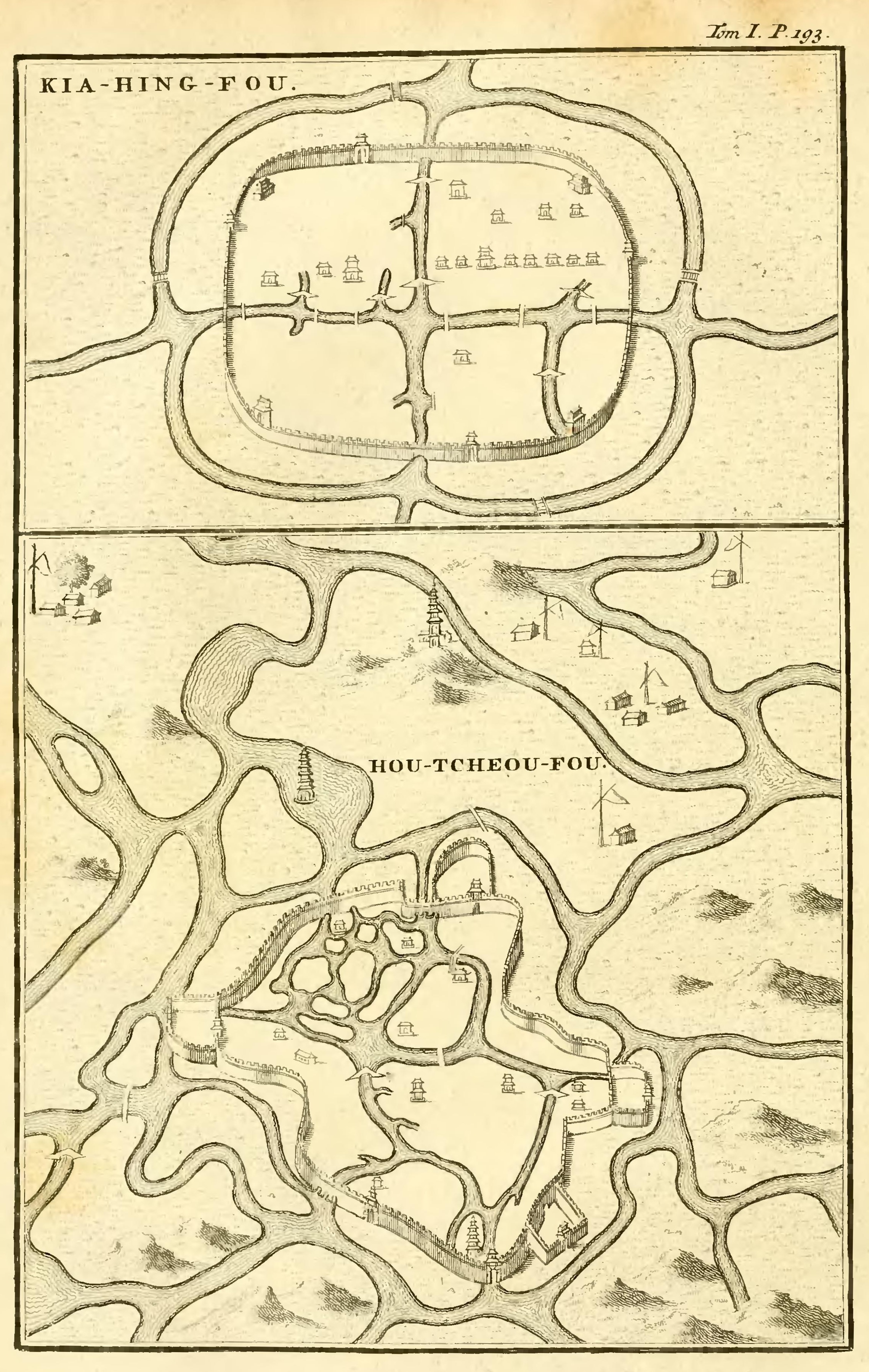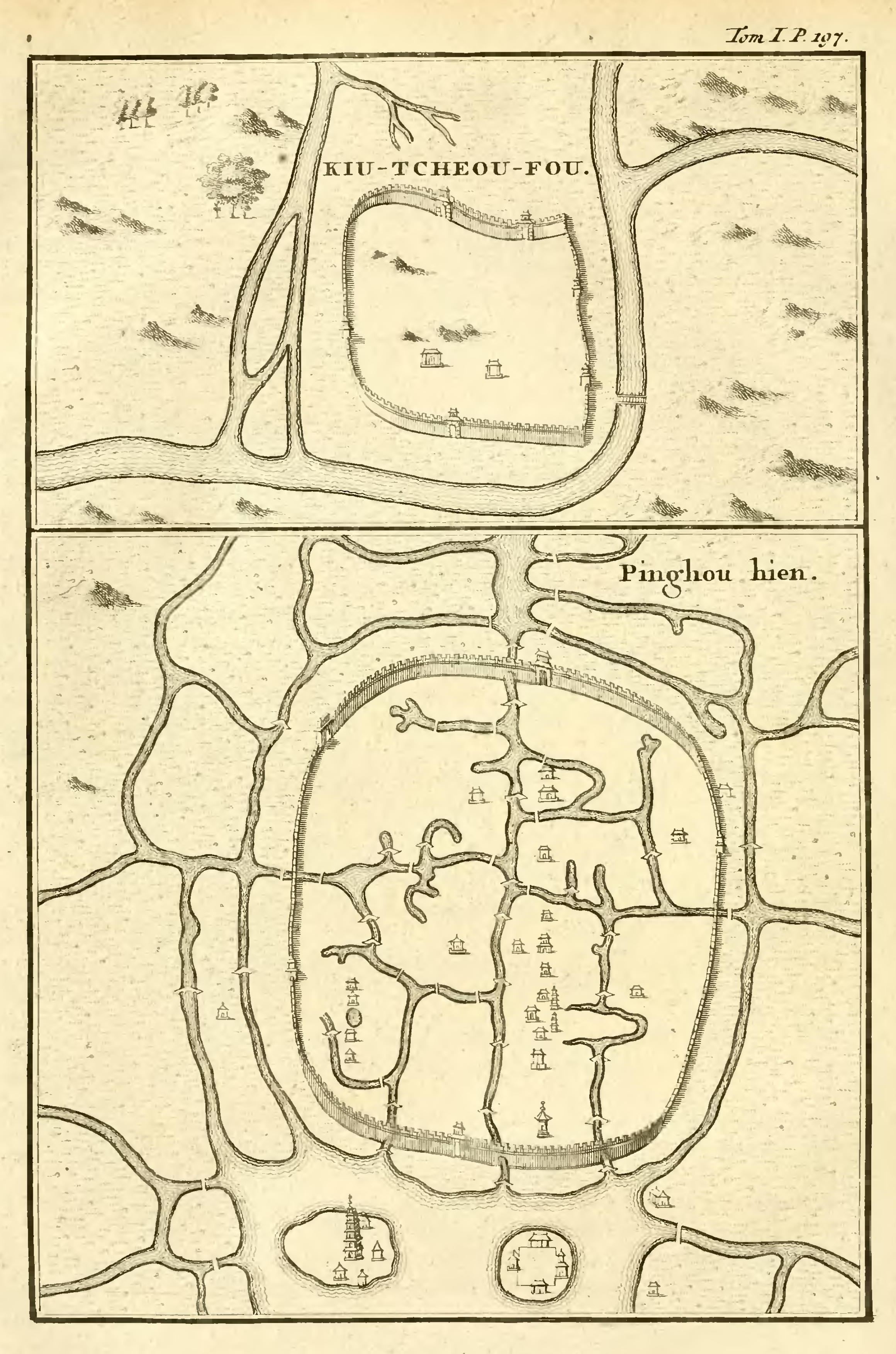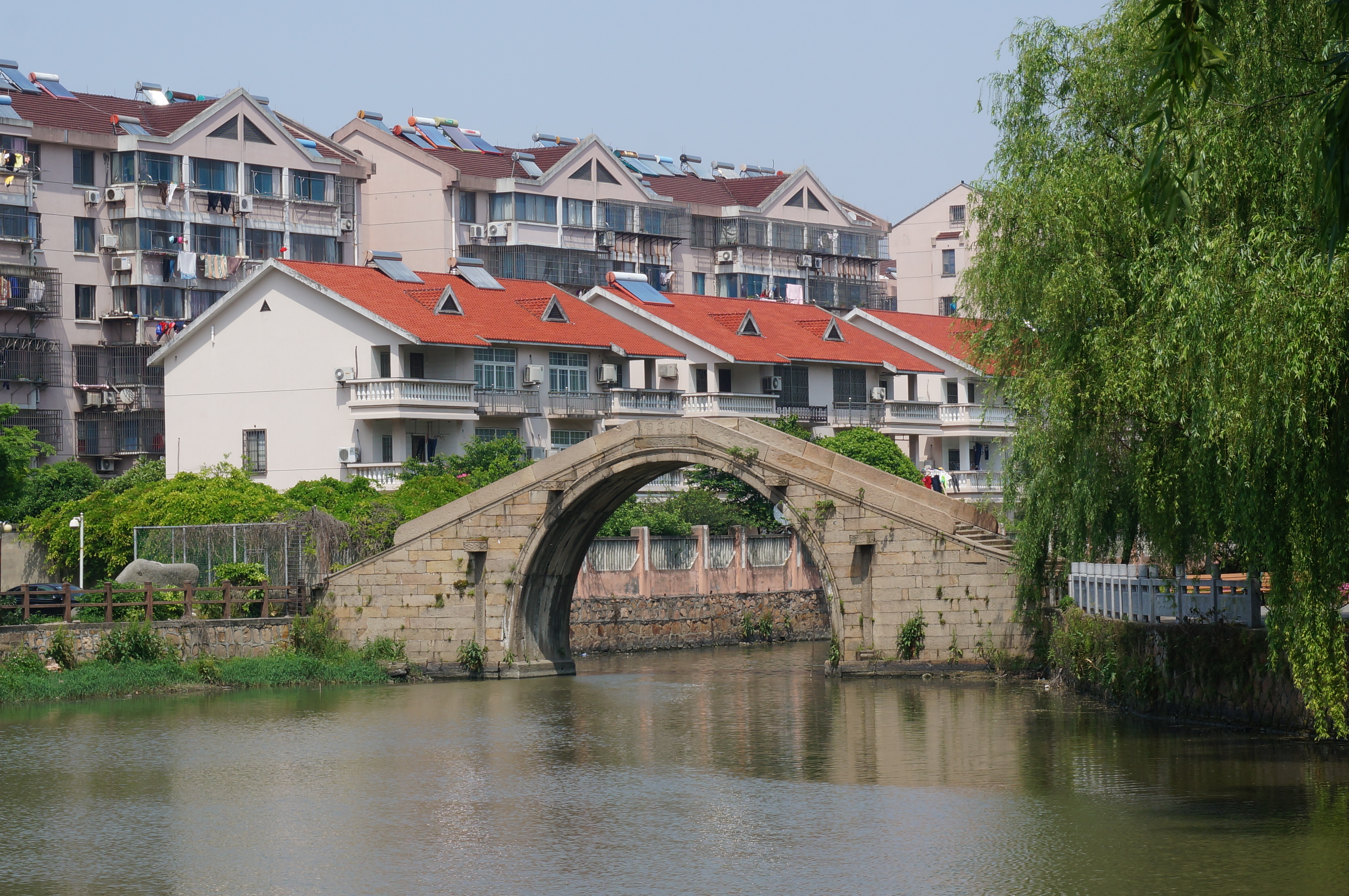|
Jiaxing City
Jiaxing (), alternately romanized as Kashing, is a prefecture-level city in northern Zhejiang province, China. Lying on the Grand Canal of China, Jiaxing borders Hangzhou to the southwest, Huzhou to the west, Shanghai to the northeast, and the province of Jiangsu to the north. As of the 2020 census, its population was 5,400,868 and its built-up (or metro) area made of 2 urban districts was home to 1,518,654 inhabitants. Administration Jiaxing is the birthplace of the Majiabang Culture in the Neolithic Age. The ancestors engaged in farming, animal husbandry, fishing and hunting 7,000 years ago. The prefecture-level city of Jiaxing administers 7 county-level divisions, including 2 districts, 3 county-level cities and 2 counties. These are further divided into 75 township-level divisions, including 60 towns, 2 townships and 13 subdistricts. History Known as a place *Spring and Autumn period: Jiaxing is known as Zuili (Drunken Plums) and is an important city in the state of ... [...More Info...] [...Related Items...] OR: [Wikipedia] [Google] [Baidu] |
Prefecture-level City
A prefecture-level city () or prefectural city is an administrative division of the China, People's Republic of China (PRC), ranking below a province of China, province and above a Counties of the People's Republic of China, county in China's administrative structure. Details During the Republican era, many of China's prefectural cities were designated as Counties of Taiwan, counties as the country's second level division below a province. From 1949 to 1983, the official term was a province-administrated city (Chinese: 省辖市). Prefectural level cities form the second level of the administrative structure (alongside prefecture of China, prefectures, Leagues of China, leagues and autonomous prefectures). Administrative chiefs (mayors) of prefectural level cities generally have the same rank as a division chief () of a national ministry. Since the 1980s, most former prefectures have been renamed into prefecture-level cities. A prefectural level city is a "city" () and "p ... [...More Info...] [...Related Items...] OR: [Wikipedia] [Google] [Baidu] |
District Of China
The term ''district'', in the context of China, is used to refer to several unrelated political divisions in both ancient and modern China. In the modern context, district ( zh, s=区, labels=no), formally city-governed district, city-controlled district, or municipal district ( zh, s=市辖区, links=no, labels=no), are subdivisions of a municipality or a prefecture-level city. The rank of a district derives from the rank of its city. Districts of a municipality are prefecture-level; districts of a sub-provincial city are sub-prefecture-level; and districts of a prefecture-level city are county-level. The term was also formerly used to refer to obsolete county-controlled districts (also known as district public office). However, if the word ''district'' is encountered in the context of ancient Chinese history, then it is a translation for ''xian'', another type of administrative division in China. Before the 1980s, cities in China were administrative divisions containi ... [...More Info...] [...Related Items...] OR: [Wikipedia] [Google] [Baidu] |
Spring And Autumn Period
The Spring and Autumn period () was a period in History of China, Chinese history corresponding roughly to the first half of the Eastern Zhou (256 BCE), characterized by the gradual erosion of royal power as local lords nominally subject to the Zhou exercised increasing political autonomy. The period's name derives from the ''Spring and Autumn Annals'', a chronicle of the state of Lu between 722 and 481 BCE, which tradition associates with Confucius (551–479 BCE). During this period, local polities negotiated their own alliances, waged wars against one another, up to defying the king's court in Luoyang, Luoyi. The gradual Partition of Jin, one of the most powerful states, is generally considered to mark the end of the Spring and Autumn period and the beginning of the Warring States period. The periodization dates to the late Western Han (). Background In 771 BCE, a Quanrong invasion in coalition with the states of Zeng (state), Zeng and Shen (state), Shen— ... [...More Info...] [...Related Items...] OR: [Wikipedia] [Google] [Baidu] |
Subdistricts Of China
A subdistrict ( zh, c= / , p=jiēdào / jiē, l=streets and avenues / streets) is one of the smaller administrative divisions of China. It is a form of township-level division which is typically part of a larger urban area, as opposed to a discrete town (zhèn, 镇) surrounded by rural areas, or a rural township (xiāng, 乡). In general, urban areas are divided into subdistricts and a subdistrict is sub-divided into several residential communities or neighbourhood A neighbourhood (Commonwealth English) or neighborhood (American English) is a geographically localized community within a larger town, city, suburb or rural area, sometimes consisting of a single street and the buildings lining it. Neighbourh ...s as well as into villagers' groups (居民区/居住区, 小区/社区, 村民小组). The subdistrict's administrative agency is the subdistrict office ( zh, s=街道办事处, p=jīedào bànshìchù)"【街道办事处】 jiēdào bànshìchù 市辖区、不 ... [...More Info...] [...Related Items...] OR: [Wikipedia] [Google] [Baidu] |
Township (People's Republic Of China)
Townships ( zh, s=乡, labels=no), formally township-level divisions ( zh, s=乡级行政区, labels=no), are the basic level (fourth-level administrative units) of political divisions in the People's Republic of China. They are similar to municipalities and communes in other countries and in turn may contain village committees and villages. In 1995 there were 29,648 townships and 17,570 towns (a total of 47,218 township-level divisions) in China which included the territories held by the Republic of China and claimed by the PRC. Much like other levels of government in mainland China, the township's governance is divided between the Communist Party Township Secretary, and the " county magistrate" ( zh, s=乡长, hp=xiāngzhǎng, links=no). The township party secretary, along with the township's party committee, determines policy. The magistrate is in charge of administering the daily affairs of government and executing policies as determined by the party committee. A township o ... [...More Info...] [...Related Items...] OR: [Wikipedia] [Google] [Baidu] |
Town (China)
When referring to Administrative divisions of China#Township level (4th), political divisions of China, town is the standard English translation of the Chinese (traditional: ; zh, p=zhèn , w=chen4). The Constitution of the People's Republic of China classifies towns as fourth-level administrative units, along with, for example, Townships of China, townships ( zh, s=乡 , p=xiāng). A township is typically smaller in population and more remote than a town. Similar to higher-level administrative units, the borders of a town would typically include an urban core (a small town with the population on the order of 10,000 people), as well as a rural area with some Villages of China, villages ( zh, labels=no, s=村 , p=cūn, or zh, labels=no, s=庄 , p=zhuāng). Map representation A typical provincial map would merely show a town as a circle centered at its urban area and labeled with its name, while a more detailed one (e.g., a map of a single county-level division) would also s ... [...More Info...] [...Related Items...] OR: [Wikipedia] [Google] [Baidu] |
Tongxiang
Tongxiang City () is a county-level city, part of Jiaxing, in northern Zhejiang Province, China, bordering Jiangsu province to the north. It had a population of 1,029,754 as of the 2020 census even though its built-up (''or metro'') area is smaller. Nevertheless, as the city is expanding east quickly, its now nearly conurbated with Jiaxing built-up (or metro) area by Xiuzhou District. Tongxiang was the birthplace of 20th-century novelist and cultural critic Mao Dun. The scenic town of Wuzhen is part of Tongxiang. Administration Tongxiang administers three subdistrict, eight towns. * Wutong Subdistrict (梧桐街道), seat of the administration * Fengming Subdistrict (凤鸣街道) * Gaoqiao Subdistrict (高桥街道) * Puyuan Town (濮院镇) * Tudian Town (屠甸镇) * Heshan Town (河山镇) *Wuzhen Town (乌镇镇) * Shimen Town (石门镇) * Dama Town (大麻镇) * Chongfu Town (崇福镇) * Zhouquan Town (洲泉镇) Climate Economy Hángbáijú (杭白菊), a variety ... [...More Info...] [...Related Items...] OR: [Wikipedia] [Google] [Baidu] |
Pinghu, Zhejiang
Pinghu is a county-level city in the east of Jiaxing's administrative area, in the northeast of Zhejiang Province, bordering Shanghai to the northeast. It sits next to the East China Sea and the north shore of Hangzhou Bay. Prior to the Ming dynasty, Pinghu was part of Haiyan County. In 1430 Pinghu County was established. In 1991 Pinghu became a county-level city under the administration of the prefecture-level city of Jiaxing. History Zhapu, the site of a deepwater harbor, was the principal site of China's foreign trade with Korea and Japan during the 18th and 19th century. Economy Pinghu dominates the Chinese down jacket industry; over half of down jackets sold in China are produced in Pinghu, and it is home to a major down jacket wholesale market. This industry started in the 1980s. An estimated 300 million garments are produced in Pinghu yearly. Administration 3 neighborhoods ( subdistricts), 7 towns *neighborhood committee and offices ** Zhongdai neighborhood ** ... [...More Info...] [...Related Items...] OR: [Wikipedia] [Google] [Baidu] |
Haining, Zhejiang
() is a county-level city in Zhejiang Province, China, and under the jurisdiction of Jiaxing. It is in the south side of Yangtze River Delta, and in the north of Zhejiang. It is to the southwest of central Shanghai, and east of Hangzhou, the provincial capital. To its south lies the Qiantang River. The city has a land area of and as of the 2020 census, had a population of 1,076,199 inhabitants. Haining is known for its leather industry and spectacular tide in the Qiantang River. Since June 2021, it's linked to Hangzhou by the new suburban Hangzhou - Haining subway Line. Basic Facts Located in the YRD region close to Shanghai and adjoining Hangzhou, Haining serves as the core of the Hangzhou Metropolitan Economic Circle and the Greater Hangzhou Bay Rim Area. The city benefits from the "one-hour economic circle" of Shanghai, Hangzhou and Suzhou with a well-developed transportation network. Haining has been promoting integrated development between traditional and emerging indus ... [...More Info...] [...Related Items...] OR: [Wikipedia] [Google] [Baidu] |
Haiyan County, Zhejiang
Haiyan County () is a county under the administration of Jiaxing City, in the north of Zhejiang province, China, situated on the north shore of Hangzhou Bay and includes the north end of the Hangzhou Bay Bridge. Its area is . Population is 370,000. Postal code: 314300. The county government is located on 118 Zaoyuan Middle Rd, Wuyuan town. In August 2010, Haiyan was selected to house the 'Nuclear City'. China will reportedly spend some €130 billion over the next ten years on developing the 130 square-kilometer Haiyan Nuclear City, which will be needed by local industry. By 2014, nine nuclear power plants should be in operation, with electrical generating capacity of around 6300 MWe, which will help reduce the country's carbon footprint. In September 2015, Six Flags and Riverside Group announced that they would build the first international Six Flags Six Flags Entertainment Corporation is an American amusement park company headquartered in Charlotte, North Carolina, Unite ... [...More Info...] [...Related Items...] OR: [Wikipedia] [Google] [Baidu] |
Jiashan County
Jiashan County () is a county in the north of Zhejiang Province, bordering Shanghai to the northeast and Jiangsu province to the north. It is administered by the prefecture-level city of Jiaxing. Jiashan is nicknamed "The Land of Fish and Rice", and is southwest of central Shanghai, east of Hangzhou, and south of Suzhou. The county seat is located on 126 People Avenue, Weitang Town. The second campus of Sanda University, known as Guangbiao Institute, is located in Jiashan County. History Jiashan formerly was part of Jiaxing. In 1430, Jiashan was established. On 1 November 2022, the county was named by a guideline of the National Development and Reform Commission (NDRC) as a "leading trial area" for common prosperity. Administration divisions Jiashan County consists of six towns, three subdistricts, 11 communities, 16 residential zones and 164 administrative villages. Subdistricts * Weitang(Former Weitang, Lize, Fengnan) * Luoxing * Huimin(Former Huimin, Datong) Towns *No ... [...More Info...] [...Related Items...] OR: [Wikipedia] [Google] [Baidu] |


